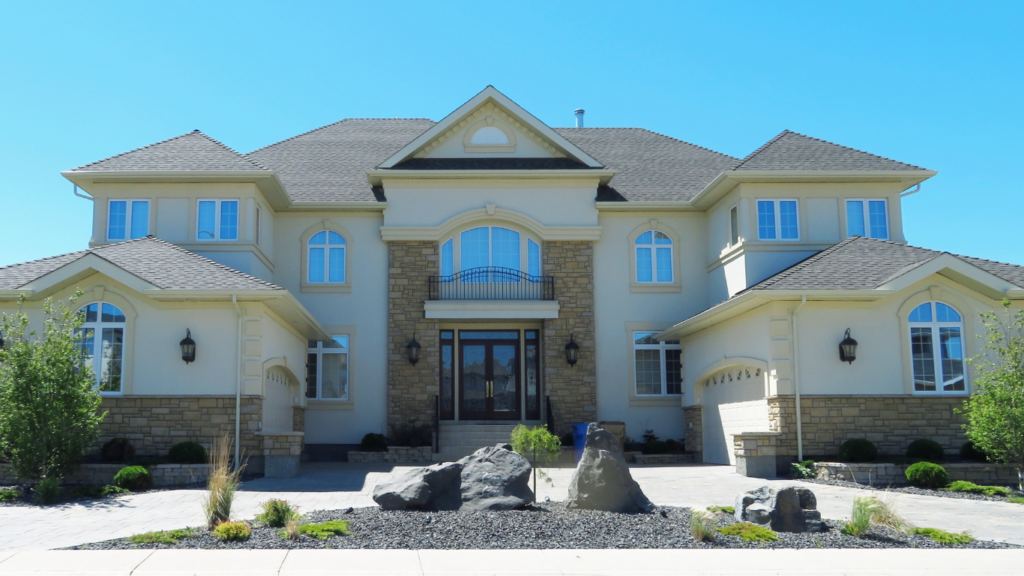Understanding Multi-Generational Homes
Multi-generational homes host two or more generations of a family under one roof. These homes typically include grandparents, parents, and children living together. The concept isn’t new; it has historical roots in many cultures. Today, it offers numerous benefits beyond financial savings.
A significant factor in the popularity of multi-generational homes is cultural tradition. In many Asian, Hispanic, and African cultures, it’s common for extended families to live together. This setup ensures family members are close-knit, helping each other in daily tasks while maintaining family traditions.
Economic advantages play a crucial role in this trend. Rising housing costs make it challenging for single families to afford separate homes. A multi-generational home splits these expenses among several working adults, relieving financial pressure. A National Association of Realtors survey found that 12% of homebuyers opted for multi-generational living due to financial considerations.
Practical benefits extend beyond money. Built-in childcare is a significant advantage, with grandparents often taking care of younger children. This arrangement can save families thousands of dollars annually on daycare costs and provide children with a nurturing environment. Elderly family members also receive in-home care, avoiding the high costs of assisted living facilities.
The trend acknowledges evolving societal norms that prioritize family support systems. Younger generations can contribute to household responsibilities while gaining wisdom from older family members. Technology and modern designs have adapted to this trend, creating homes with separate living areas to ensure privacy while promoting togetherness.
Historical Context
Throughout history, multi-generational homes have been integral to various cultures. This trend has evolved, influenced by societal, economic, and historical factors.
Early Examples
Early examples of multi-generational homes existed across different civilizations. In Ancient Rome, extended families often lived together. Similarly, in medieval Europe, family estates housed multiple generations under one roof. Asian cultures, including China and India, also practiced multi-generational living, emphasizing familial duty.
Post-World War II Decline
Post-World War II, the rise of suburban living in Western countries marked a decline in multi-generational homes. Economic growth and social mobility encouraged nuclear family units. Housing policies and urban development promoted single-family homes, contributing to the trend’s decline.
Current Trends and Statistics
Multi-generational homes are gaining traction in today’s housing market. Recent trends indicate significant changes in household compositions.
Rise in Numbers
The number of multi-generational households in the US has surged. According to Pew Research Center, 64 million Americans lived in multi-generational homes in 2016, compared to 51.5 million in 2009. Economic factors like rising housing costs and financial insecurities drive this increase. The COVID-19 pandemic further accelerated the trend, with many families opting to live together for shared resources and support.
Demographic Breakdown
A diverse array of demographics contributes to the rise in multi-generational living. Pew Research Center data from 2016 shows that 27% of Asian households are multi-generational, the highest among ethnic groups. Hispanic and African American households follow at 26% and 23%, respectively. Millennials and Baby Boomers are key age groups in this trend. Millennials, facing economic challenges, often return home post-college, while Baby Boomers invite aging parents to live with them for better care and support.
Driving Factors
Several factors contribute to the increased popularity of multi-generational homes. These include economic considerations, cultural influences, and the need to care for elderly family members.
Economic Considerations
Economic factors drive many families toward multi-generational living. High housing costs, increasing rents, and stagnant wages make it challenging for younger generations (Millennials, for example) to afford separate homes. Sharing living spaces reduces overall housing expenses and allows families to pool financial resources. According to Pew Research, 20% of Americans lived in multi-generational households in 2016, a number influenced by economic pressure. Sharing mortgage or rent costs among multiple income earners eases individual burdens and increases financial stability for the entire household.
Cultural Influences
Cultural norms significantly impact the preference for multi-generational homes. In many Asian, Hispanic, and African American communities, it’s common for multiple generations to live together. These norms emphasize family unity and collective support. A study by the Pew Research Center found that 29% of Asian Americans lived in multi-generational households in 2016, the highest among other ethnic groups. Such arrangements foster stronger family bonds and ensure cultural traditions are passed down seamlessly from one generation to the next.
Care For Elderly Family Members
Caring for elderly family members is a primary reason families opt for multi-generational living. Aging Baby Boomers often require assistance with daily activities and medical needs. Families find it more convenient and cost-effective to care for elderly relatives at home rather than utilizing external care facilities. A 2018 AARP study noted that 52% of adults aged 50 and older preferred aging in place. Living together allows families to provide direct care, emotional support, and a sense of community to their elderly members. For many, it ensures that older relatives are safe and well-taken care of while maintaining familial connections.
Benefits of Multi-Generational Living

Multi-generational homes offer significant advantages for all family members. These benefits range from cost savings to emotional and practical support.
Economic Savings
Multi-generational living can significantly cut expenses. By sharing costs of housing, utilities, and groceries among multiple income-earners, families can save substantial amounts. For example, a Pew Research study found that multi-generational households saw a reduction in per capita cost of living. Additionally, with housing prices soaring, combining resources makes homeownership more attainable for younger generations.
Emotional Support
The emotional benefits are just as important as financial ones. Living with extended family provides a built-in support system, reducing feelings of loneliness and isolation, especially for the elderly and children. A research article in the Journal of Family Psychology highlighted that individuals in multi-generational homes reported higher life satisfaction and lower levels of stress. This support is invaluable during crises, such as job loss or health issues.
Shared Responsibilities
Dividing household duties among more adults can ease the burden on everyone. Tasks like:
- childcare
- eldercare
- household chores
become shared responsibilities rather than resting on a single family member. Families can arrange schedules so that childcare is always available without the need for costly daycare services. Moreover, caring for elderly relatives at home not only saves on assisted living costs but also ensures they receive personalized care.
Challenges and Solutions
Living in a multi-generational home presents unique challenges. However, effective solutions can make these arrangements rewarding for everyone.
Privacy Concerns
Balancing privacy with togetherness proves challenging in multi-generational homes. All members need personal space; otherwise, tension rises. One solution involves creating private zones for each family unit. This could mean designating bedrooms and bathrooms exclusively for certain family members. Installing soundproofing in key areas like bedrooms and home offices also helps. Another method includes scheduling alone time for everyone, ensuring personal space without constant interaction.
Space Management
Efficiently managing space becomes critical with multiple generations under one roof. Storing personal items productively avoids clutter. Custom storage solutions like built-in cabinets and under-bed storage efficiently use available space. Additionally, multifunctional furniture, such as sofa beds and expandable dining tables, optimizes communal areas. Designating specific areas for communal activities ensures everyone knows where to gather without infringing on private spaces. Planning renovations that add square footage or repurpose existing rooms addresses space constraints further.
Conflict Resolution
Differing opinions and lifestyles often lead to conflicts within multi-generational households. Establishing clear communication channels typically prevents misunderstandings. Family meetings offer a platform for discussing issues openly and finding collective solutions. Setting household rules and responsibilities ensures fairness and reduces friction. It’s crucial to respect the perspectives of all generations; patience and empathy play key roles. Professional mediation may also be an option when conflicts escalate beyond manageable levels.
Addressing these challenges fosters harmonious multi-generational living and harnesses its numerous benefits.
Real-Life Examples
Multi-generational homes offer real-world insights into the benefits and challenges families face. Here are a few success stories and common pitfalls, with tips on how to avoid them.
Success Stories
- The Johnson Family: The Johnson family, consisting of three generations—grandparents, parents, and children—share a suburban home in Chicago. They pooled their financial resources to purchase a larger home, providing each member with sufficient space. They’ve found financial relief in shared expenses and have developed deeper bonds through shared meals and family activities. Their key to success is effective communication and clear division of responsibilities.
- The Rodriguez Household: Living in Miami, the Rodriguez family incorporates four generations under one roof. Cultural traditions play a significant role in their household, fostering respect and understanding across age groups. Grandparents pass down stories and customs to the younger members, enriching their cultural heritage. The Rodriguezes prioritize privacy by designating separate living spaces while maintaining areas for family gatherings.
- The Lee Family: The Lee family in San Francisco manages to balance career, education, and caregiving for elderly parents. Both parents are working professionals, while the grandparents take care of the children. This arrangement saves on childcare costs and ensures the children grow up with strong family support. The Lees emphasize the importance of regular family meetings to discuss and resolve any issues promptly.
Common Pitfalls and How to Avoid Them
- Lack of Privacy: One common issue in multi-generational homes is the lack of privacy. While living together, it’s essential to provide everyone with their own personal space. Design separate areas within the home to ensure privacy for each member. For instance, allocate specific rooms or floors to different generations.
- Conflict Resolution: Disagreements are inevitable when multiple generations live together. Encourage family members to communicate openly about their concerns. Establishing household rules and a regular meeting schedule can help address and manage conflicts effectively. For example, deciding on quiet hours or chores can reduce misunderstandings.
- Financial Strain: While pooling resources can be beneficial, financial strain can still occur. Create a clear budget that outlines shared and individual expenses. It’s crucial to have transparent discussions about finances to prevent any misunderstandings. Determine which expenses will be shared and which are individual responsibilities to maintain financial harmony.
These examples highlight the growing trend of multi-generational homes, showcasing both the benefits and potential pitfalls. Applying these practical solutions helps families maximize the advantages while minimizing challenges.


 Ron Wilson has played a vital role in the establishment of Villa Estates Luxe, bringing his expertise in property management and investment strategies to the project. His guidance has been invaluable in developing comprehensive buying guides that empower potential villa owners to make informed decisions in a competitive market. Ron's in-depth knowledge of market dynamics has informed the platform's analysis and reporting, allowing users to navigate complex real estate trends with confidence. His commitment to excellence and dedication to educating clients have not only enhanced the platform’s credibility but have also established Villa Estates Luxe as a go-to source for industry insights and investment strategies in the luxury villa sector.
Ron Wilson has played a vital role in the establishment of Villa Estates Luxe, bringing his expertise in property management and investment strategies to the project. His guidance has been invaluable in developing comprehensive buying guides that empower potential villa owners to make informed decisions in a competitive market. Ron's in-depth knowledge of market dynamics has informed the platform's analysis and reporting, allowing users to navigate complex real estate trends with confidence. His commitment to excellence and dedication to educating clients have not only enhanced the platform’s credibility but have also established Villa Estates Luxe as a go-to source for industry insights and investment strategies in the luxury villa sector.